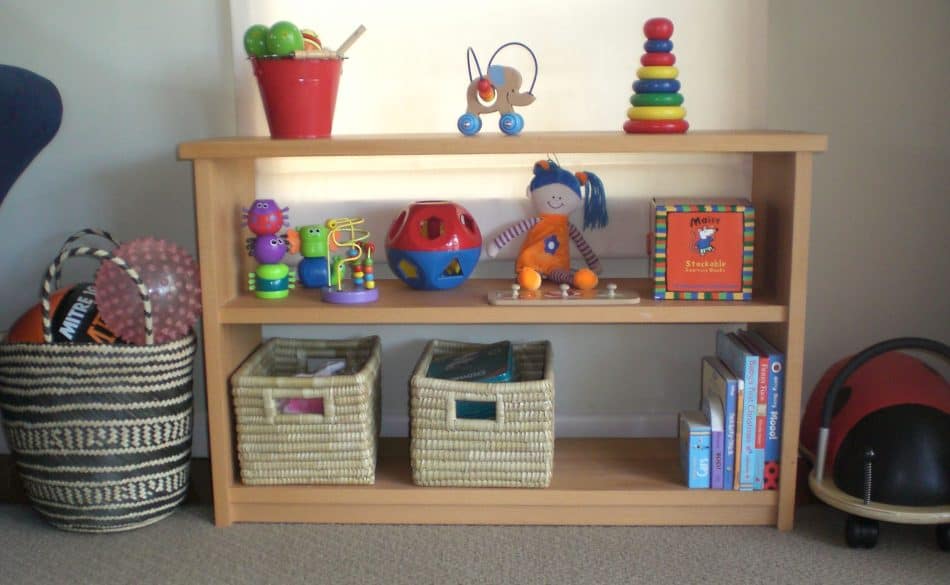
It is often thought that if you have children, it is impossible to be a minimalist, that is a misconception, you can raise your children as minimalists, and it has many positive benefits.
Often without even realizing it we buy into the consumerism mentality and by example teach our children that more is better which could not be further from the truth. Instead, we can raise our children using a minimalistic approach to life, teaching them to value experiences and people over material possessions.
When it comes to toys, all kids have them, but you are in control of what kind of toys and how many toys they have. Whatever example you set will feel natural to them, children who are overindulged think of that as normal, children who are not never come to expect that.
A survey done by the toy company Premium Joy found that 8 in 10 kids, 80% play with only 20 toys or fewer out of all the toys they have at home. 44% of children play with just 5-10 toys while 21% play with 11-20 toys.
According to the Toy Industry Association (TIA) the average household owns over 70 toys. One fifth of households have more than 100 toys, and more than 1 in 10 homes own more than 200 toys, they found the average family spends $581 a year on toys.
When adults are surrounded by clutter at home or at work they are less focused and more distracted, children feel the same when they have too many toys making it difficult for them to concentrate and learn. Having a limited number of toys that are well organized leads to a calmer, less stressful environment, and they will show greater appreciation and gratitude for what they do have.
Having too many toys can have a detrimental effect on a child’s cognitive and neurological development according to a study done by the University of Toledo and published in The Journal of Infant Behavior and Development. The study called, The Influence of the Number of Toys in the Environment on Toddler’s Play compared 4 and 16 toy environments. Results showed that in the 4-toy environment, the duration, manner, and complexity of play with each item was twice as long than the 16-toy environment. Researchers believe that “fewer toys may allow for deeper, sophisticated play, because of the opportunity to become creative with each object in the environment.”
Start by Decluttering
Make four piles, keep, donate, sell and trash and then sort the toys into the appropriate piles. Donate or sell anything that the kids no longer play with, or they have outgrown. Throw away anything that is broken or damaged.
Get Organized
Once you have decided which toys to keep decide how you will organize the toys, clear bins and totes work great because the children can see what is inside. Shelves, fabric baskets and canvas pouches can be used for books, stuffed animals, games, and art supplies.
For toy sets like trains and train tracks, dolls and doll accessories, Legos, building blocks and kitchen sets you could use a storage container with multiple drawers to keep the different sets separated but in the same container. Store the toys so that your child can easily access them and put them away. Print labels to attach to the containers so they know where everything belongs, the labels can include words and pictures.
Kids won’t know how to tidy up and organize their toys unless you show them. Teach them how to clean their rooms and put their toys and clothes away and then set aside a designated time each day for them to clean up.
Limit the Amount of Toys
Decide how many toys your children are permitted to have, choose a number that you feel is appropriate and stick to it. To maintain that number, you can implement the one in one out rule, when a new toy comes in another must go.
Help the children choose which toys they will keep, and which toys they will get rid of. They can give the toys to a friend or relative or donate them, donating can teach children a powerful lesson on generosity and giving.
It can be hard to persuade kids to part with their toys, but it is a great learning opportunity for them, they will learn important lessons about decision making and appreciation.
Toy Rotation
You might consider a toy rotation. Split up the toys that you are keeping, put half out for them to play with and stow the others away, then after some time swap the toys. The kids will feel like they are getting new toys.
Do Not Make Toy Shopping a Habit
Toy shopping should be done on special occasions, such as birthdays or Christmas. Don’t make a habit of buying children toys at other times. When children appreciate what they have they will value, play with and take care of their toys.
Choose the Right Kind of Toys
Toys should be age appropriate and stimulate learning, creativity, and imagination. You don’t have to spend a lot of money on toys, small children can have fun playing with everyday household items. Simple toys like blocks, train sets, cars and trucks, dolls, kitchen sets, animal and people figurines, coloring books and crayons can lead to hours of fun.
More Activities Less Toys
Playing does not always need to include toys. Encourage kids to be active, playing outdoors, playing games, trips to the park or a museum, hiking, bike riding are all ways to have fun. Children can be active, have fun, and learn without using toys.
